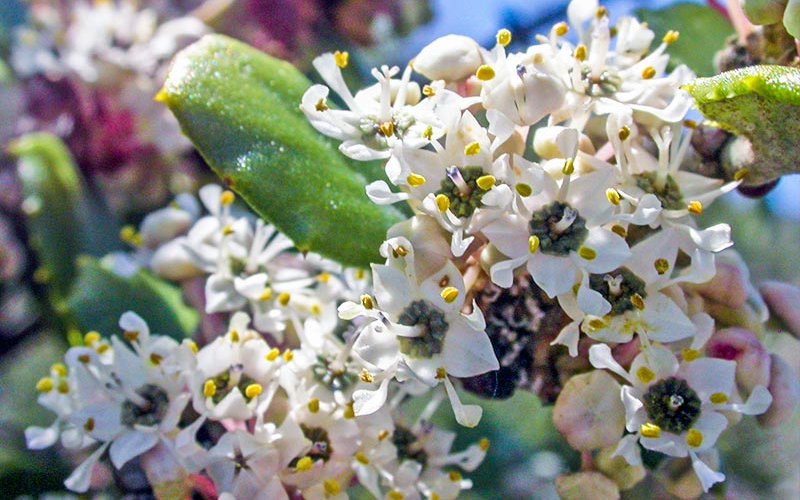
What limits the ability of plants to draw water from dry soil?
That is the question Cal State Fullerton plant biologist H. Jochen Schenk and his international research collaborators asked in an effort to solve the mystery of how plants suck water from the driest soil.
In their study, the researchers found why plants can’t survive and function in the driest of soils, including the physical limits to the amount of suction plants can produce to move water up to their leaves. The scientists describe their findings in a new peer-reviewed study published today, May 1, in the journal Proceedings of the National Academy of Sciences.
This interdisciplinary study by plant biologists and physicists is important because it potentially explains how plants take up water in very dry soil — such as drought-tolerant plants in Southern California and in the desert — and survive, said Schenk, a co-author of the paper.
“The point is that we have plants right around us that are the most drought-tolerant plants known on Earth, and which can pull water out of bone-dry soil right to the limit of what is physically possible. Our paper explains what appears to cause that physical limit,” Schenk said.
The research project is part of a $714,000 National Science Foundation grant directed by Schenk, professor of biological science. The other members of the research team and co-authors of the paper are from the Jožef-Stefan Institute in Ljubljana, Slovenia; and the Max Planck Institute of Colloids and Interfaces in Potsdam; Free University of Berlin; University of Ulm; and Technical University of Darmstadt, all in Germany.
Plants take in water from the soil by means of negative pressure, or suction, in the xylem, which is a plant’s hydraulic system that pulls water from the roots and soil. Evaporation from the leaves creates the force that pulls sap up the xylem towards the leaves.
“Negative pressure happens inside plants all the time when water is pulled up through the plant by the leaves,” Schenk said.
Some local plants, such as hoaryleaf ceanothus or black sage, are able to create the highest suctions recorded for any plant in the world, with their roots taking up water from extremely dry soil, Schenk noted.
“The water molecules inside these plants are stretched and normally don’t rip apart because water molecules stick together really well. However, the lipid bilayers in the water are not quite so sticky, so at very high suction they start to come apart, and that is what our study found,” he relayed.

In their study, the team of international researchers sought to find what limits the ability of plants to take up water from dry soil, yet how dry soil can be to still allow a plant to function and survive. This illustration shows how a plant takes up water from the roots and soil, but how the lipid bilayer in vessels buckles under increased suction and forms a cavity, making water movement impossible and limiting the suction of water. Credit: Matej Kanduč, Jožef Stefan Institute in Ljubljana, Slovenia
The scientists conclude that lipids in the xylem, in which water flows through the plant, can withstand only so much suction.
The scientists show that lipids — a water-insoluble natural substance — in the plant sap leads to the formation of growing cavities in the plant’s water column if the suction gets too strong. This can result in limited suction power that affects how plants can get water from drying soil, Schenk explained.
“We show that the lipids are responsible for the phenomenon in the plant sap, where cavities start to form in the sap when the suction gets too strong,” he said.
“At that point, cavities appear, then grow into gas bubbles and block the xylem, making further water movement impossible. The strongest suction possible in plants, in scientific terms, is about -100 atmospheres — the equivalent of 100 times the weight of our atmosphere pulling on the water inside the plant.”
A stronger suction power would be an advantage for a plant since it could pull water from dry soils more effectively and enable a plant to grow larger and thrive.
“Our findings, however, determine that the presence of lipid aggregates imposes an upper limit for the magnitude of suction, and with that, restricts how dry the soil can be where trees and other plants are able to grow.”
The study’s findings are also of interest in connection with climate change, with soils drying out in more and more regions of the world.
“Plants evolved in the water and then later conquered the land, evolving the ability to live in drier and drier places.” said Schenk. “It is intriguing to think that we found the reason why plants finally hit a limit of how much drought they could survive.”
Contact: Debra Cano Ramos, dcanoramos@fullerton.edu